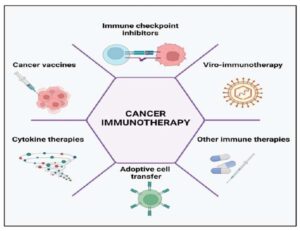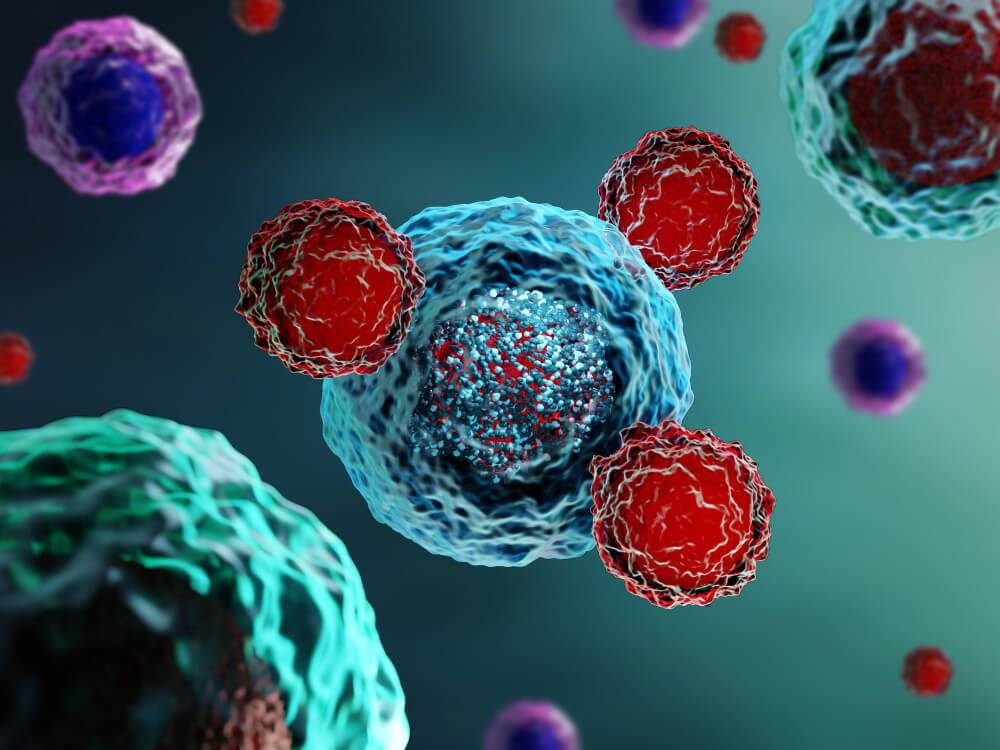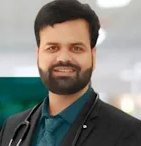Research Objectives:
Evaluate the effectiveness of Candrol immunotherapy in treating various cancers. Analyse India’s strengths in medical research, affordability, and infrastructure for cancer treatment. Investigate the potential of India as a medical tourism destination for patients seeking Candrol therapy.
Keywords:
Cancer, Immunotherapy, Candrol, India
Bio
Dr. Rishi Sharma, M.D., is a graduate of S.K.H Medical College, Jaipur, is a pioneering figure in cancer immunotherapy. His groundbreaking research on Non pDL1 criteria led to the development of the Candrol line of treatments, without cytotoxic effects in the body. Honoured with numerous national and international accolades, including recognition from Forbes and Houses of Parliament, London. He serves patients from across the world and is a well reputed centre for medical tourism in India IN for cancer patients. With his constant efforts to chase immunology in cancer patients he is able to bring 65% positive response in stage 4 patients which is highly appreciated globally. His expertise have contributed to revolutionary change in cancer medicine through his understanding of genes and cancer behaviour in all chemotherapy resistant subjects.
From Traditional Treatments to Tailored Therapy: Why India is Emerging as a Leader in Candrol Immunotherapy for Medical Tourism.
Abstract
Cancer remains a leading cause of death worldwide. Immunotherapy has revolutionised cancer treatment, offering new hope for patients. Candrol, a groundbreaking non-PD-L1 based immunotherapy protocol, tailors treatment to individual patient characteristics and cancer type. This study explores India’s potential as a burgeoning medical tourism destination for Candrol therapy, focusing on its well-researched technology, highly qualified medical professionals, affordability, and advanced medical infrastructure. The study explores how India’s strengths position it as a compelling destination for medical tourists seeking Candrol immunotherapy. This study is carried out through a thorough review of existing literature and professional experience. Central findings highlight Candrol’s effectiveness in reducing cancer recurrence, offering a potential lifeline for patients who may not respond well to traditional therapies. Clinical trials indicate a promising reduction in recurrence rates, even in advanced and aggressive cancers. Furthermore, Candrol exhibits a low side effect profile, primarily limited to mild blood sugar fluctuations and sleepiness, making it a more tolerable option for many patients.
India actively invests in medical research, contributing to advancements in immunotherapy and potentially offering access to the latest treatments. The country boasts a large pool of highly skilled and experienced oncologists who can provide expert care. Additionally, India offers significantly lower treatment costs compared to developed nations, making Candrol therapy more accessible to a wider range of patients. Finally, major Indian hospitals possess cutting-edge medical facilities to support advanced treatments, ensuring patients receive high-quality care.
1.0 Introduction
Cancer remains a significant global health burden, claiming millions of lives annually (WHO, 2024). Traditional treatment modalities like surgery, chemotherapy, and radiotherapy have played a vital role in managing cancer, but they often come with debilitating side effects and limited efficacy depending on the stage and type of cancer (Anand, et al., 2022). The emergence of immunotherapy has revolutionised the treatment landscape, offering a more targeted and potentially less toxic approach (Zhang & Zhang, 2020).
One such innovative immunotherapy protocol is Candrol. Unlike the prevailing PD-L1 checkpoint inhibitors, Candrol utilises a non-PD-L1 based approach, tailoring treatment to the specific characteristics of each patient and their unique cancer type. This personalised approach holds immense promise for improved treatment outcomes and a reduction in side effects (Sharma, 2019).
Types of cancer immunotherapy encompass immune checkpoint inhibitors, cancer vaccines, cytokines, viral therapies, and adoptive cell transfer as illustrated in figure 1.
India presents a compelling option as a burgeoning medical tourism destination for Candrol immunotherapy for several reasons. Firstly, the country boasts a well-established medical research infrastructure (Kshirsagar, Pahuja, Chatterjee, & Kamboj, 2023), actively contributing to advancements in immunotherapy and potentially offering access to cutting-edge treatments like Candrol. Secondly, according to the National Medical Council (NMC), there are 594 postgraduate seats for MD in Radiation Oncology available across various states in India (Munshi, Rastogi, Durga, & Beriwal, 2023). India offers a significant advantage in terms of affordability compared to developed nations (Kumar, 2023), making Candrol therapy potentially accessible to a wider range of patients seeking this novel treatment option. This unique combination of well-researched technology, highly qualified medical professionals, and affordability positions India as a potential leader in Candrol immunotherapy for medical tourism.

Objectives
This research aims to:
1. Evaluate the effectiveness of Candrol immunotherapy in treating various cancers.
2. Analyse India’s strengths in medical research, afford- ability, and infrastructure for cancer treatment.
3. Investigate the potential of India as a medical tourism destination for patients seeking Candrol therapy.
2.0 Method
This research employed a comprehensive review methodology to investigate India’s potential as a medical tourism destination for Candrol immunotherapy. The review focused on three key areas:
- Candrol Immunotherapy: This involved a review of existing literature on Candrol, including its mechanism of action, clinical trials, effectiveness data, and side effect profile. Relevant sources included scientific journals, research reports, and conference proceedings.
- India’s Medical Tourism Industry: This analysed the current state of India’s medical tourism industry. Research focused on factors such as infrastructure, affordability, government initiatives, and the availability of skilled medical professionals. Relevant sources included industry reports, government publications, and academic journals.
- India’s Medical Research and Infrastructure: This reviewed India’s research capabilities in the field of immunotherapy and its overall medical infrastructure. Sources included reports from government agencies, medical research institutions, and healthcare industry associations.
Inclusion and Exclusion Criteria:
Inclusion Criteria:
- Studies published in the last 10 years (2014-2024) on immunotherapy and Candrol immunotherapy.
- Studies focusing on India’s medical tourism industry and its strengths.
- Studies analysing India’s medical research infrastructure and its capacity for advanced treatments. Exclusion Criteria:
- Studies solely focused on marketing or promotional content for Candrol or Indian medical tourism.
- Studies published in non-peer-reviewed sources or with limited methodological rigor.
Data Analysis: Extracted data from the reviewed literature was critically analysed to identify key themes and patterns. These themes were used to assess the strengths and weaknesses of India’s suitability for medical tourism with Candrol immunotherapy.
3.Results and Discussion
Candrol Immunotherapy:
Reviewing existing literature on Candrol revealed its potential as a promising treatment for various cancers. The key findings are as follows:
Tailored Therapy: A Personalised Approach to Cancer Treatment Candrol immunotherapy stands out in the field by offering a non-PD-L1 based approach to cancer treatment (Sharma, 2019). This translates to a more personalised treatment plan for each patient, potentially leading to improved efficacy compared to“one-size-fits-all”approaches.
Non-PD-L1 Based Approach: Traditional immunotherapy often relies on PD-L1 check- point inhibitors (Boldt, 2024). These drugs work by target- ing a specific protein (PD-L1) found on cancer cells, allowing the immune system to recognise and attack them. However, not all cancers express high levels of PD-L1, and some patients may not respond well to these therapies. Candrol takes a different route, focusing on other mechanisms within the immune system that can be activated to fight cancer, regardless of PD-L1 expression.
Candrol immunotherapy goes beyond a one-size-fits-all approach. To optimise treatment for each patient, several factors are considered: genetic mutations driving the cancer, allow- ing for targeted therapy; immune system function, which influences whether Candrol should stimulate or regulate the immune response; and overall health, ensuring a safe and effective treatment plan (Sharma, 2019). By analysing these factors, a personalised Candrol protocol is developed, potentially including a unique combination of ingredients tailored to the patient’s specific cancer for maximised effectiveness and minimised side effects.
Potential Benefits of Tailored Therapy with Candrol
According to case studies carried out on patients at the Canderol centre of oncology the following provides potential benefits of Candrol for cancer patients:
Improved Efficacy: By focusing on the individual’s cancer and immune system, Candrol may offer a more effective attack on the tumour compared to generic therapies. This could lead to better tumour shrinkage, improved response rates, and potentially longer progression-free survival.
Reduced Side Effects:
Since Candrol targets the specific cancer and avoids relying solely on PD-L1, it may have fewer off-target effects. This could translate to a less disruptive treatment experience for patients with a lower risk of severe side effects.
Hope for Previously Untreatable Patients: Patients who haven’t responded well to traditional treatments due to low PD-L1 expression or other factors might find new hope with Candrol’s personalised approach.
3.1 Reduced Recurrence:
Hope for High-Risk Cancer Patients
The reappearance of cancer after initial treatment, remains a significant challenge (Riggio, Varley, & Welm, 2021). It can be emotionally devastating for patients and their families, and depending on the type and stage of cancer, recurrence can significantly impact survival rates. Clinical trials carried out by Candrol Cancer Treatment and Research Center suggest that Candrol immunotherapy might offer a glimmer of hope by potentially reducing cancer recurrence rates, particularly for patients with a high risk of relapse after traditional treatments (Sharma, 2019).
Cancer recurrence remains a significant hurdle after initial treatment. Dormant cancer cells, those that lie hidden after therapy, can reawaken and cause relapse. Addition- ally, traditional treatments like chemo and radiation may not eliminate all cancer cells, leaving behind a population that can regrow. Furthermore, cancer cells themselves can mutate, developing resistance to the initial treatment and increasing the chance of recurrence (Waldman, Fritz, & Lenardo, 2020).
Candrol’s Potential Impact on Recurrence: According to Candrol Centre of Oncology, Candrol might play a role in reducing recurrence by potentially influencing various mechanisms:
•Enhanced Immune Memory: Candrol therapy could potentially stimulate the immune system to develop a stronger “memory” of the cancer cells. This enhanced memory allows the immune system to more effectively recognise and attack any residual cancer cells or those that might try to reemerge after initial treatment.
•Targeting Dormant Cells: Certain components of Candrol might target dormant cancer cells, preventing them from awakening and initiating relapse.
•Immunomodulation: Candrol may help regulate the immune system, creating a more balanced environment that hinders cancer cell growth and promotes a robust antitumour response.
Hope for High-Risk Patients: Patients with a high risk of recurrence including those with aggressive cancer types, advanced stages, or incomplete initial treatment response, often face a heightened anxiety about relapse. The potential of Candrol to reduce recurrence rates offers significant hope for this group. It could potentially extend their disease-free intervals, improve overall survival rates, and offer a longer period of quality life. Important Considerations: While the findings are encouraging, it’s crucial to remember that the data on Candrol is still preliminary. Further research with larger patient cohorts and longer follow-up is necessary to definitively establish its effectiveness in reducing recurrence rates across various cancer types. Additionally, Candrol might be most effective when used in conjunction with other conventional treatment modalities as part of a comprehensive treatment plan. The potential of Candrol to reduce cancer recurrence offers a promising avenue for high-risk patients. Continued research and clinical trials are crucial to confirm its efficacy and solidify its role in the fight against cancer recurrence.

3.2 Manageable Side Effects
Traditional cancer treatments, while life-saving, often come with a significant burden of side effects. These side effects can range from nausea and fatigue to hair loss and nerve damage, severely impacting a patient’s quality of life during treatment.
Candrol immunotherapy offers a potential advantage in this regard, exhibiting a low side effect profile, making the treatment experience potentially more manageable.
The Burden of Traditional Treatment Side Effects:
- Debilitating Effects: Chemotherapy and radiotherapy are effective in killing cancer cells, but they also damage healthy tissues in the process (Zawrzykraj, Deptuła, Kondej, Tymińska, & Pikuła, 2023). This can lead to a range of debilitating side effects, such as nausea, vomiting, fatigue, hair loss, and mouth sores. These side effects can significantly interfere with daily activities, work, and overall well-being.
- Long-Term Complications: Some side effects of traditional therapies can have long-term consequences. For example, chemotherapy can damage the heart, lungs, and kidneys, while radiotherapy can increase the risk of secondary cancers (Majeed & Gupta, 2024).
- Reduced Treatment Adherence: The severity of side effects can sometimes lead to treatment non-adherence. Patients may choose to skip or stop treatment altogether due to the debilitating effects, potentially compromising the treatment’s success.
It has been suggested by Candrol Centre of Oncology that Candrol exhibits a low side effect profile. The primary concerns seem to be limited to: Mild Blood Sugar Fluctuations: Candrol might influence blood sugar levels in some patients. This can be easily managed through dietary modifications or medication adjustments. Sleepiness: Some patients may experience mild sleepiness or fatigue while undergoing Candrol therapy. This could potentially be addressed through adjustments in sleep hygiene or medication timing.
Significance of Manageable Side Effects:
Improved Quality of Life: By minimising debilitating side effects, Candrol potentially allows patients to maintain a better quality of life during treatment. They can continue with daily activities, work, and social interactions with fewer disruptions.
Enhanced Treatement Adherence: A more tolerable treatment regimen with fewer severe side effects can lead to improved treatment adherence. Patients are more likely to complete the entire course of Candrol therapy, maximising its potential benefits. Greater Patient Experience: Overall, a treatment with a low side effect profile can significantly improve the patient experience. It allows them to focus on fighting the disease while maintaining a sense of normalcy in their lives. Candrol’s potentially low side effect profile presents a significant advantage over traditional cancer treatments. This could lead to a more tolerable treatment experience, improved quality of life, and potentially better treatment outcomes for patients.
Complementary Treatment: Combining Candrol with Existing Therapies for Enhanced Outcomes Candrol potential is further amplified by its ability to be used in conjunction with existing treatment modalities like radiotherapy and chemotherapy. This complementary approach could offer additive or even synergistic effects, potentially leading to improved patient outcomes (Sharma, 2019).
Limitations of Traditional Therapies:
While established therapies like radiotherapy and chemotherapy play a vital role in cancer treatment, they have limitations (Fernández, 2024).
Non-Specificity: These treatments often target both cancerous and healthy cells, leading to side effects. Development of Resistance: Cancer cells can develop resistance to traditional therapies over time, rendering them ineffective.
Limited Efficacy: Depending on the cancer type and stage, these therapies may not always achieve complete tumour eradication.
Potential Benefits of Combining Candrol:
Candrol’s ability to be used alongside traditional therapies offers several potential advantages according to Candrol Cancer Treatment and Research Center:
Additive Effects: Combining Candrol with radiotherapy or chemotherapy might create an additive effect, enhancing the overall tumour-killing power of the treatment regimen. This could potentially lead to better tumour shrinkage and improved response rates.
Synergistic Effects: In some cases, the combination of Candrol with traditional therapies might create a synergistic effect. This means that the combined impact is greater than the sum of the individual treatments. Candrol could potentially enhance the immune system’s ability to recognise and attack cancer cells targeted by radiotherapy or chemotherapy.
Overcoming Resistance: Candrol’s mechanism of action, independent of PD-L1 expression, might help overcome resistance developed against traditional therapies, offering a new line of attack for previously unresponsive cancers.
3.3 India’s Medical Tourism Industry
India’s medical tourism industry has emerged as a strong contender in recent years, attracting patients worldwide seeking high-quality and cost-effective healthcare (Malhotra & Dave, 2022).
Affordability: Compared to developed nations, India offers significantly lower treatment costs for advanced medical procedures, including cancer treatments (Mehrotra & Yadav, 2022). This affordability factor is particularly relevant for Candrol immunotherapy, which might not yet be covered by all insurance plans internationally. Medical tourists in India pay only a fraction of the cost compared to similar treatments in developed countries. This affordability makes Candrol therapy potentially accessible to a wider range of patients seeking this novel treatment option.
Skilled Medical Professionals: Medical professionals often receive training at prestigious institutions in India and abroad (Kansal, et al., 2023), ensuring they possess the necessary knowledge and skills to handle complex treatment protocols like Candrol. Additionally, the Medical Council of India (MCI) regulates the medical education system, and Central Council Of Homoeopathy (CCH) ensuring a standardised level of training and competency among medical professionals. This abundance of skilled oncologists allows patients seeking Candrol therapy to access high-quality care from qualified healthcare providers.
Advanced Medical Infra- structure:
Major Indian hospitals, particularly those catering to medical tourists, possess cutting-edge medical facilities equipped with advanced technologies to support complex treatment protocols. These facilities often house sophisticated diagnostic equipment, specialised treatment units, and modern laboratories. This advanced infrastructure ensures access to the necessary resources for successful treatment delivery. For instance, many hospitals boast advanced imaging technologies like PET scans and MRIs crucial for accurate cancer diagnosis and treatment planning, potentially impacting the effectiveness of Candrol therapy.
4.0 Conclusion
The findings from this study suggest a compelling synergy between Candrol immunotherapy and India’s medical tourism industry. Patients seeking access to this novel treatment can potentially benefit from India’s affordability, skilled medical professionals, and advanced medical infrastructure. However, some limitations require consideration. Firstly, the availability of data on Candrol is limited due to its relatively new status. Further research with larger patient cohorts and long-term follow-up is necessary to definitively establish its effectiveness. Secondly, while India’s medical tourism industry offers advantages, concerns regarding quality control and potential medical errors in some facilities exist.
Patients considering Candrol therapy in India should thoroughly research to choose reputable hospitals with proven patient safety records and successful outcomes. This could involve checking for accreditation by international organisations and reviewing patient testimonials. India’s medical tourism industry positions itself as a gamechanger for Candrol immunotherapy, a promising new cancer treatment. This powerful synergy stems from India’s strengths: affordability, making Candrol accessible to a broader patient base compared to developed nations.
By focusing on these areas, India can optimise the synergy with Candrol immunotherapy:
• Continued Research: Investing in clinical trials and research on Candrol’s effectiveness will strengthen its reputation as a viable treatment option.
• Quality Focus: The medical tourism industry can solidify its position by prioritising robust accreditation processes and transparent reporting of patient outcomes.
• Patient Education: Raising awareness about Candrol and the importance of choosing reputable healthcare providers within India is crucial for informed decision-making by patients.
References
Anand, U., Dey, A., Chandel, A. K., Sanyal, R., Mishra, A., Pandey, D. K., . . . Pérez de la Lastra, J. M. (2022). Cancer chemotherapy and beyond: Current status, drug candidates, associated risks and progress in targeted therapeutics. Genes Dis.
Boldt, C. (2024, 02 05). Which cancers can be treated with immune checkpoint inhibitors? Retrieved from mdanderson: https://www.mdan- derson.org/cancerwise/what-cancers-can-be-treated-with-immunotherapy.h00- 159386679.html
Fernández, R. M. (2024). Curb- ing the climb in cancer incidence. The Lancet Oncology, 529.
Kansal, R., Singla, A., Bawa, A., Malhotra, K., Lalchandan, J., Grewal, J., . . . Mondal, H. (2023). A nationwide survey on the preference of Indian undergraduate medical students to go abroad for higher studies and residency. J Family Med Prim Care.
Anand, U., Dey, A., Chandel, A. K., Sanyal, R., Mishra, A., Pand- ey, D. K., . . . Pérez de la Lastra, J. M. (2022). Cancer chemotherapy and beyond: Current status, drug candidates, associated risks and progress in targeted therapeutics. Genes Dis.
Boldt, C. (2024, 02 05). Which cancers can be treated with immune checkpoint inhibitors? Retrieved from mdanderson: https://www.mdan- derson.org/cancerwise/ what-cancers-can-be-treated-with-immunotherapy.h00- 159386679.html
Fernández, R. M. (2024). Curbing the climb in cancer incidence. The Lancet Oncology, 529.
Kansal, R., Singla, A., Bawa, A., Malhotra, K., Lalchandan, J., Grewal, J., . . . Mondal, H. (2023). A nationwide survey on the preference of Indian undergraduate medical students to go abroad for higher studies and residency. J Family Med Prim Care.
Kciuk, M., Yahya, E., Mohamed Ibrahim Mohamed, M., Rashid, S., Iqbal, M., Kon- tek, R., . . . Allaq, A. (2023). Recent Advances in Molecular Mechanisms of Cancer Immunotherapy. Cancers.
Kshirsagar, N. A., Pahuja, M., Chatterjee, N. S., & Kamboj, V. P. (2023). Early phase clinical trials in India: Need & scope. Indian J Med Res.
Kumar, A. (2023). The Transformation of The Indian Healthcare System. Cureus.
Majeed, H., & Gupta, V. (2024). Adverse Effects of Radiation Therapy. Treasure Island: StatPearls Publishing.
Malhotra, N., & Dave, K. (2022). An Assessment of Competitiveness of Medical Tourism Industry in India: A Case of Delhi NCR. JGBC.
Mehrotra, R., & Yadav, K. (2022). Breast cancer in India: Present scenario and the challenges ahead. World J Clin Oncol.
Munshi, A., Rastogi, K., Durga, T., & Beriwal, S. (2023). Post graduation in radiation oncology from India. The options ahead. Indian Journal of Cancer, 588-592.
Riggio, A. I., Varley, K. E., & Welm, A. (2021). The lingering mysteries of metastatic recurrence in breast cancer. Br J Cancer , 13-26.
Sharma, R. (2019). What is Candrol. Retrieved from Candrol.com: https://www.candrol.com/about-candrol/
Waldman, A., Fritz, J. M., & Le- nardo, M. (2020). A guide to cancer immunotherapy: from T cell basic science to clinical practice. . Nat Rev Immunol, 651–668.
WHO. (2024). Global cancer burden growing, amidst mounting need for services. Geneva: World Health Organization.
Winstead, E. (2019, 05 10). New Drugs, New Side Effects: Complications of Cancer Immunotherapy. Retrieved from National Cancer Institute: https://www.cancer.gov/news-events/cancer-currents-blog/2019/cancer-immunotherapy-investigating-side-effects
Zawrzykraj, M., Deptuła, M., Kondej, K., Tymińska, A., & Pikuła, M. (2023). The effect of chemotherapy and radiotherapy on stem cells and wound healing. Current perspectives and challenges for cell-based therapies. Biomedicine & Pharmacotherapy.
Zhang, Y., & Zhang, Z. (2020). The history and advances in cancer immunotherapy: understanding the characteristics of tumor infiltrating immune cells and their therapeutic implications. Cell Mol Immunol, 807–821 .



